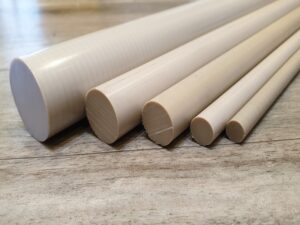Description
Polypropylene Random Copolymer (PPR): The Plumbing Material Revolutionizing Hot & Cold Water Systems
For decades, metal pipes dominated the plumbing industry, bringing water to our homes and businesses. However, the tide is turning. Polypropylene Random Copolymer (PPR), a thermoplastic polymer known for its robustness, flexibility, and resistance to corrosion, is rapidly becoming the preferred material for hot and cold water systems.
What is PPR?
PPR is a type of polypropylene created by randomly copolymerizing propylene with a small amount of ethylene. This random arrangement of molecules disrupts the crystallinity of the polypropylene, resulting in a material with improved flexibility, impact resistance, and clarity compared to traditional polypropylene homopolymers.
Why Choose PPR? The Advantages are Clear:
PPR offers a compelling range of advantages over traditional plumbing materials like copper and galvanized steel:
- Corrosion Resistance: Unlike metal pipes, PPR is impervious to corrosion. This eliminates the risk of rust, scaling, and the degradation of water quality, ensuring a longer lifespan for the piping system and cleaner water for consumers.
- Heat Resistance: PPR can withstand high temperatures, making it ideal for hot water applications. It can handle temperatures up to 95°C (203°F) without deformation or degradation.
- Frost Resistance: PPR’s flexibility allows it to expand and contract without cracking, making it resistant to damage caused by freezing water.
- Chemical Resistance: PPR is resistant to a wide range of chemicals, including acids, bases, and solvents, making it suitable for various industrial and laboratory applications.
- Lightweight: PPR is significantly lighter than metal pipes, making it easier to handle and install. This translates to reduced labor costs and faster project completion times.
- Hygiene: PPR is a non-toxic material that doesn’t leach harmful chemicals into the water supply, ensuring safe and potable water for consumption.
- Cost-Effective: While the initial cost of PPR pipes might be comparable to some metal alternatives, its long-term cost-effectiveness is undeniable. Reduced installation costs, lower maintenance requirements, and extended lifespan contribute to significant savings over the lifetime of the system.
- Easy Installation: PPR pipes are joined using a heat fusion process, which creates a strong and leak-proof joint. This eliminates the need for soldering or threading, simplifying the installation process and reducing the risk of leaks.
- Noise Reduction: PPR pipes have excellent acoustic absorption properties, minimizing the noise generated by water flowing through the system.
Applications of PPR:
PPR is not just limited to residential plumbing. Its versatile properties make it suitable for a wide range of applications, including:
- Hot and Cold Water Systems: The primary application of PPR is in domestic and commercial hot and cold water distribution systems.
- Heating Systems: PPR can be used in radiator heating systems and underfloor heating systems.
- Industrial Piping: PPR is suitable for transporting various chemicals and fluids in industrial settings.
- Agriculture: PPR is used in irrigation systems and for conveying water in greenhouses and agricultural fields.
- Swimming Pools: PPR is a popular material for piping systems in swimming pools and spas due to its chlorine resistance.
- Compressed Air Systems: In some applications, PPR can be used for low-pressure compressed air systems.
The Future of Plumbing is PPR:
As awareness of the benefits of PPR grows, its adoption in the plumbing industry continues to expand. Its superior performance, cost-effectiveness, and ease of installation make it a compelling alternative to traditional materials. With ongoing advancements in PPR technology and increasing demand for sustainable and reliable plumbing solutions, PPR is poised to become the dominant material in the future of hot and cold water systems worldwide.
Conclusion:
Polypropylene Random Copolymer (PPR) is a game-changing material that is revolutionizing the plumbing industry. Its unique combination of strength, flexibility, and resistance to corrosion makes it the ideal choice for a wide range of applications. By choosing PPR, consumers and contractors can enjoy a more durable, efficient, and cost-effective plumbing system for years to come.










Reviews
There are no reviews yet.